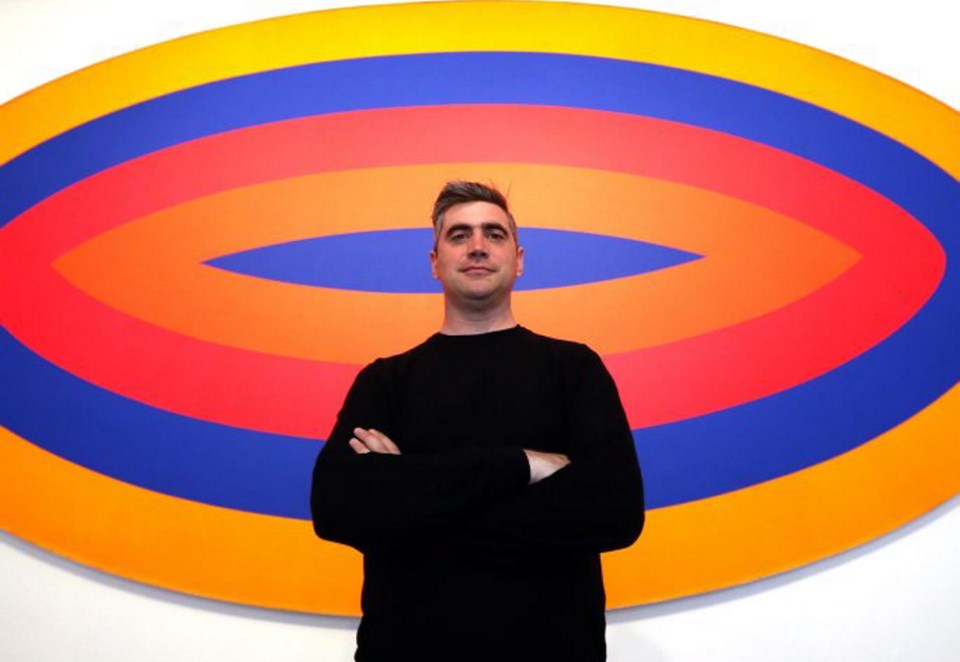What: Through the Looking-Glass
When: Opening tonight, 8 to 10 p.m.
Where: Art Gallery of Greater Victoria
Lee Plested might be jetlagged and sleep-deprived, but he perks up at first mention of his whimsical exhibition.
“Follow me,” the Vancouver-based curator says with a wide grin. “I’ll show you Through the Looking-Glass.”
As the title suggests, references to Lewis Carroll and his famed sequel to Alice’s Adventures in Wonderland weave together the works in the show. But there are no renditions of Tweedledee and Tweedledum here.
Instead, Plested uses the literary theme as a structural device to explore the modernist works in the Art Gallery of Greater Victoria’s permanent collection and the way they’ve influenced local contemporary artists.
Plested said he is inspired by the role museums play in collecting, preserving and building scholarship around the history of art. When he looked into the gallery’s collection, he was surprised to see so many early modernist works by European greats like Magritte, Picasso, Dali and Manet.
He also saw parallels between art and Lewis’s texts.
“Often, I feel that people find contemporary art confusing and strange and maybe even a little bit unapproachable. In the text of Carroll, that’s what’s actually playful and funny and fantastic,” Plested said.
Modern artists also manipulated subject matter in the same way Carroll’s characters did.
“Expansion, contraction, version, reversion: All these are formal ways of thinking through the — if you will — ‘problem’ of making a picture.”
Plested leads the way into the first room of the exhibition. Arranged with a William Morris chair, chinois furniture, a Tiffany vase, it represents two things: Alice in her sitting room before stepping through a mirror in the reflected world, as well as the pre-modern art world.
But there are Easter eggs from the future — like a chess set designed by Man Ray. And at the edge of the room, a curtain of tinsel.
“Throughout the exhibition, most of the characters are out of chronological time, so they’re sort of a surprise or something coming from the future that is leading us toward the contemporary,” he said.
On one side of the tinsel is Manet’s photo-realist portrait of Beaudelaire, the poet and art critic credited with coining the term “modernity.” Crossing through, another hangs on the opposite wall — this one reduced to a simple illustration. And an incense burner looks like a combination of the vase and table from the room before.
“The chinois table has shrunken, the Tiffany vase has enlarged to become this incense burner. Everything has expanded and contracted to become another world,” Plested said.
Each room in the exhibition tells the story of a different chapter of Alice’s journey as a pawn through the chess game she plays with the Red Queen. And in each case, it also represents a different stage in the development of modern art.
In the Garden of Talking Flowers, realist renditions have given way to Léger’s abstracted floral works.
“Alice is surprised that they speak and early-modernist flowers speak in different ways, too,” Plested said.
Alice’s train ride, filled with absurd and crazy voices, is a hallway of early works by early modernists challenging what a painted picture could be.
“There was sort of a cacophony of voices and ideas about how to recreate the picture plane and embrace social and psychological ideas into art-marking,” Plested said.
The Forest of Forgetting is represented by landscape paintings by Canadian modernists the Group of Seven.
And a battle between the White Knight and Red Knight, which meant unpredictable L-shaped movements on a chess board, reflected the off-kilter move into conceptualism.
Characters are represented by specific works of art: A massive oval painting by Claude Tousignant is Humpty Dumpty. And the Red Queen is a contemporary painting by Lethbridge artist Taras Polataiko referencing the way modern artist Lucio Fontana slashed through his canvas, puncturing the picture plane.
Works by local contemporary artists like Robert Youds, Noah Becker, Daniel Laskarin and Mowry Baden also pepper the show.
However ambitious the theme was, Plested said it came together surprisingly easily. He wanted to show works by some of the best artists of the last century and believes he did.
“It was an opportunity to try something that, in terms of an exhibition, is quite bold,” he said.
“Really, it almost magically fell into place. There were all these amazing associations that came together in a kind of surprising and enlightening way.”
